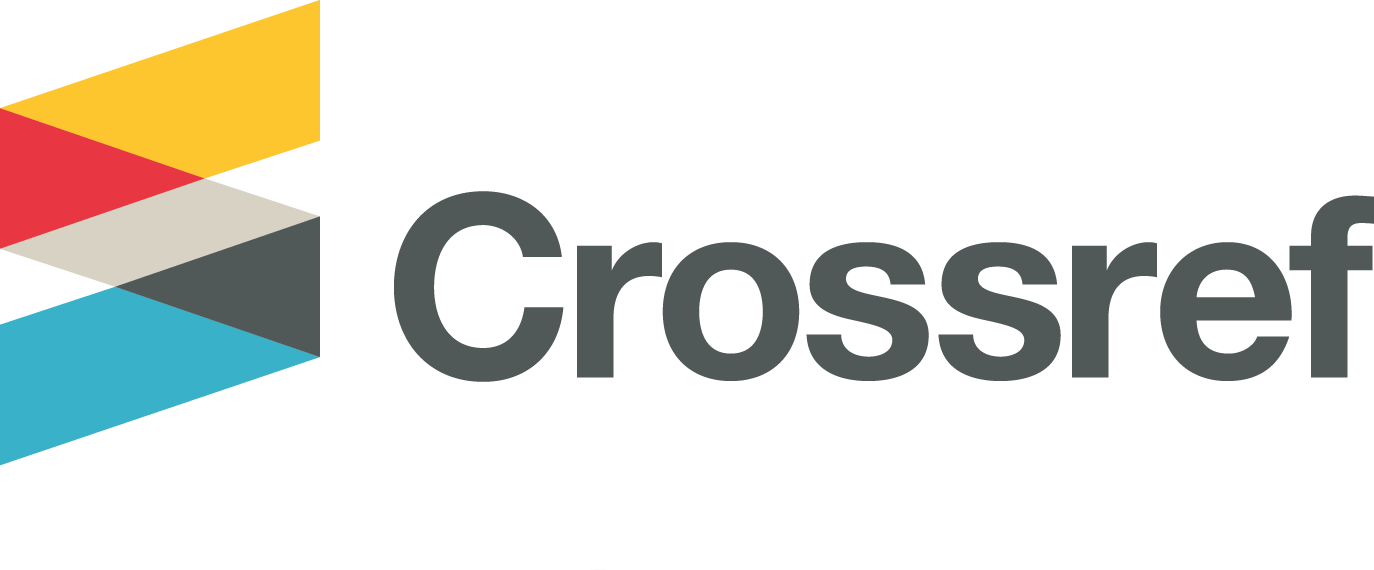Validation of Confirmatory Factor Analysis (CFA) Adaptation of The Family Strengths Measurement Tool In Indonesian
Abstract
The concept of family strength not only focuses on the ability to overcome challenges, but also involves identifying strengths that can be optimized within the family. Measurement instruments are needed to identify family strengths. One such measurement instrument is the Qatar Family Strength (QFS), which consists of seven dimensions: commitment to family, support for each other, effective communication, respect for each other, passing on family values and traditions, family resilience, and showing love and affection for each other. This study aimed to adapt and evaluate the psychometric properties of the Indonesian version of the Qatar Family Strength Scale (QFS). The QFS measures the extent to which family members believe that their family has strengths that make it a strong family. The instrument was piloted with 474 participants aged 15-18 years. The results showed that the Indonesian version of the QFS, with a seven-dimensional model (47 items), demonstrated good model fit (RMSEAWLSMV = 0.077, CFIWLSMV = 0.94, TLIWLSMV = 0.94). Additional validity tests, such as content validity index (CVI), and reliability tests using Cronbach's alpha were conducted. The findings show that the Indonesian version of the QFS with 47 items is reliable and valid.
Konsep family strengths tidak hanya memfokuskan kemampuan dalam permasalahan yang dihadapi, melainkan terdapat pula identifikasi kekuatan yang dapat dioptimalkan dalam sebuah keluarga. Penggunaan alat ukur bertujuan untuk mengidentifikasi family strengths. Salah satu alat ukur family strengths adalah Qatari Family Strengths (QFS) yang terdiri atas tujuh aspek dimensi, yakni commitment to the family, support for each other, effective communication, respect for each other, conveying values and family traditions, family resilience, dan demonstrating love and affection for each other. Tujuan penelitian ini adalah untuk mengadaptasi dan menguji properti psikometri dari alat ukur Qatari Family Strengths (QFS) versi Bahasa Indonesia. QFS bertujuan untuk mengukur sejauh mana seorang anggota keluarga percaya bahwa keluarga mereka memiliki kekuatan yang menjadikan keluarga yang kuat (strong family). Alat ukur diujikan kepada 474 partisipan dengan status anak dengan rentang usia 15-18 tahun. Hasil menunjukkan bahwa alat ukur QFS versi Bahasa Indonesia dengan model tujuh aspek (47 item) memiliki model fit yang baik (RMSEAWLSMV=0.077, CFIWLSMV=0.94, TLIWLSMV=0.94). Uji validitas lainnya yang dilakukan adalah content validity index (CVI) serta untuk uji reliabilitas dilakukan dengan melihat nilai cronbach’s alpha. Hasil menunjukkan bahwa alat ukur QFS versi Bahasa Indonesia dengan 47 item termasuk dalam kategori reliabel dan valid.
Keywords
Full Text:
FULL TEXTReferences
Bentler, P. M., & Bonett, D. G. (1980). Significance tests and goodness of fit in the analysis of covariance structures. Psychological Bulletin, 88(3), 588–606. https://doi.org/10.1037/0033-2909.88.3.588
Bethell, C. D., Gombojav, N., & Whitaker, R. C. (2019). Family resilience and connection promote flourishing among US children, even amid adversity. Health Affairs, 38(5), 729–737. https://doi.org/10.1377/hlthaff.2018.05425
BPS. (2022). Jumlah perceraian menurut provinsi dan faktor, 2022. https://www.bps.go.id/id/statistics-table/3/YVdoU1IwVmlTM2h4YzFoV1psWkViRXhqTlZwRFVUMDkjMw==/jumlah-perceraian-menurut-provinsi-dan-faktor.html?year=2022
Brown, T. A. (2015). Confirmatory factor analysis for applied research (Second). The Guilford Press.
Center Pew Research. (2010). Marriage. Pewresearch.Org. https://www.pewresearch.org/social-trends/2010/11/18/iii-marriage/#:~:text=Asked to evaluate the reasons,%2C financial stability (31%25).
Coombs, R. H. (2005). family therapy review: Preparing for comprehensive and licensing examinations. LAWRENCE ERLBAUM ASSOCIATES, PUBLISHERS. https://doi.org/10.4324/9781410611475
Cresswell, J. W. (2014). Research design: Qualitative, quantitative, and mixed methods approaches (4th ed.). SAGE publications.
Defrain, J., & Asay, S. M. (2007). Family strengths and challenges in the USA. Strong Families Around the World: Strengths-Based Research and Perspectives, 281–307. https://doi.org/10.1300/J002v41n03
DeFrain, J., & Asay, S. M. (2007). Strong families around the world: An introduction to the family strengths perspective. Marriage & Family Review, 41(1–2), 1–10. https://doi.org/10.4324/9781315866277-8
Desiverlina, B. (2014). Hubungan kecerdasan emosional dan keharmonisan keluarga dengan motivasi belajar siswa di sekolah SMK kesehatan Samarinda. Psikoborneo: Jurnal Ilmiah Psikologi, 2(4), 238–243.
Hair, J. J. F., Black, W. C., Babin, B. J., & Anderson, R. E. (2019). Multivariate data analysis (8th ed.). Cengage Learning.
Herbell, K., Breitenstein, S. M., Melnyk, B. M., & Guo, J. (2020). Family resilience and flourishment: Well-being among children with mental, emotional, and behavioral disorders. Research in Nursing and Health, 43(5), 465–477. https://doi.org/10.1002/nur.22066
Howe, T. R. (2012). Marriages & families in the 21st century: A bioecological approach. In Marriages & Families in the 21st Century. WILEY-BLACKWELL. https://doi.org/10.1002/9781444344714
Indonesia. (2009). Undang-undang republik Indonesia nomor 52 tahun 2009: Tentang perkembangan kependudukan dan pembangunan keluarga. http://downloads.esri.com/archydro/archydro/Doc/Overview of Arc Hydro terrain preprocessing workflows.pdf%0Ahttps://doi.org/10.1016/j.jhydrol.2017.11.003%0Ahttp://sites.tufts.edu/gis/files/2013/11/Watershed-and-Drainage-Delineation-by-Pour-Point.pdf%0Awww
Institute, D. I. F. (2019). The Arab family strength. In Hamad Bin Khalifa University Press. Hamad Bin Khalifa University Press.
Institute, D. I. F. (2022). The state of Qatar families: Strengths and challenges. Hamad Bin Khalifa University Press.
International Test Commission. (2017). ITC guidelines for translating and adapting tests (2nd ed.).
Karimah, K. (2021). Kesepian dan kecenderungan perilaku menyakiti diri sendiri pada remaja dari keluarga tidak harmonis. Psikoborneo: Jurnal Ilmiah Psikologi, 9(2), 367–380.
Neppl, T. K., Senia, J. M., & Donnellan, M. B. (2016). The effects of economic hardship: Testing the family stress model over time. J Fam Psychol, 30(1), 12–21. https://doi.org/10.1037/fam0000168
Olson, D. H., DeFrain, J., & Skogrand, L. (2019). Marriages and families: Intimacy, diversity, and strengths (Ninth). McGraw-Hill Education. https://doi.org/10.1128/AAC.03728-14
Otto, H. A. (1963). Criteria for assessing family strength. Family Relations, 2, 329–338. https://doi.org/doi:10.1111/j.1545-5300.1963.00329.x
Peterson, C. H., Peterson, N. A., & Powell, K. G. (2017). Cognitive interviewing for item development: Validity evidence based on content and response processes. Measurement and Evaluation in Counseling and Development, 50(4), 217–223. https://doi.org/10.1080/07481756.2017.1339564
Prasetya, H. (2018). Pergeseran orientasi nilai tradisional menuju tatanan modernitas pada masyarakat pinggiran ibukota. WACANA, Jurnal Ilmiah Ilmu Komunikasi, 17(1), 115–124. https://doi.org/10.32509/wacana.v17i1.509
Putri, E. R., & Sofia, L. (2021). Kematangan emosi dan religiusitas terhadap keharmonisan keluarga pada dewasa awal. Psikoborneo: Jurnal Ilmiah Psikologi, 9(2), 430–439.
Rahmawati, & Gazali, M. (2018). Pola komunikasi dalam keluarga. Al-Munzir, 11(2), 163–181.
Rhemtulla, M., Brosseau-Liard, P. É., & Savalei, V. (2012). When can categorical variables be treated as continuous? A comparison of robust continuous and categorical SEM estimation methods under suboptimal conditions. Psychological Methods, 17(3), 354–373. https://doi.org/10.1037/a0029315
Riyono, B. (2022). Keluarga sebagai fondasi peradaban bangsa: Sebuah strategi memanfaatkan bonus demografi secara optimal. Buletin Psikologi, 30(1), 59–77. https://doi.org/10.22146/buletinpsikologi.68234
Stratton, S. J. (2021). Population research: Convenience sampling strategies. Prehospital and Disaster Medicine, 36(4), 373–374. https://doi.org/10.1017/S1049023X21000649
Streiner, D. L. (2003). Starting at the Beginning: An İntroduction to Coefficient Alpha and Internal Consistency. Journal of Personality Assessment, 80(1), 99–103.
Sunarti, E. (2015). Ketahanan keluarga Indonesia: Dari kebijakan dan penelitian menuju tindakan. Orasi Ilmiah Guru Besar IPB, 1–67.
Tavakol, M., & Dennick, R. (2011). Making sense of Cronbach’s alpha. International Journal of Medical Education, 2, 53–55. ttps://doi.org/10.5116/ijme.4dfb.8dfd
Ulfiah. (2016). Psikologi keluarga: Pemahaman hakikat keluarga dan penanganan problematika rumah tangga. GHALIA INDONESIA.
Undang-Undang Republik Indonesia Nomor 52 Tahun 2009 tentang Perkembangan Kependudukan dan Pembangunan Keluarga, Lembaran Negara Republik Indonesia (2009).
Walsh, F. (1994). Healthy family functioning: Conceptual and research developments. Family Business Review, 7(2), 175–198.
Walsh, F. (2021). Family resilience: A dynamic systemic framework. In Family resilience in: Multisystemic resilience. Oxford University Press. https://doi.org/10.1093/ oso/ 9780190095888.003.0015
Wetchler, J. L., & Hecker, L. L. (2015). An introduction to marriage and family therapy (second). Routledge.
Xia, Y., & Yang, Y. (2019). RMSEA, CFI, and TLI in structural equation modeling with ordered categorical data: The story they tell depends on the estimation methods. Behavior Research Methods, 51(1), 409–428. https://doi.org/10.3758/s13428-018-1055-2
Yustifah, S., Adriansyah, M. A., & Suhesty, A. (2022). Hubungan religiusitas dengan resiliensi individu dalam keluarga pada penyintas covid-19 di Kota Balikpapan. Psikoborneo: Jurnal Ilmiah Psikologi, 10(1), 169–179.
DOI: http://dx.doi.org/10.30872/psikoborneo.v13i3.20463
Refbacks
- There are currently no refbacks.
Copyright (c) 2025 Safarina Firdausi Royhana., Ratna Jatnika, Fitri Ariyanti Abidin

This work is licensed under a Creative Commons Attribution-ShareAlike 4.0 International License.
PSIKOBORNEO: Jurnal Ilmiah Psikologi Published by Faculty of Social and Political Siences, University of Mulawarman, Samarinda, East Kalimantan and This work is licensed under a Creative Commons Attribution-ShareAlike 4.0 International License.
________________________________________
PSIKOBORNEO: Jurnal Ilmiah Psikologi
Department of Psychology
Faculty of Social and Political Siences, University of Mulawarman
Jl. Muara Muntai Kampus Gn. Kelua Samarinda 75411
Phone: +62 813 35350368
E-Mail: psikoborneo@gmail.com / psikoborneo@fisip.unmul.ac.id
















